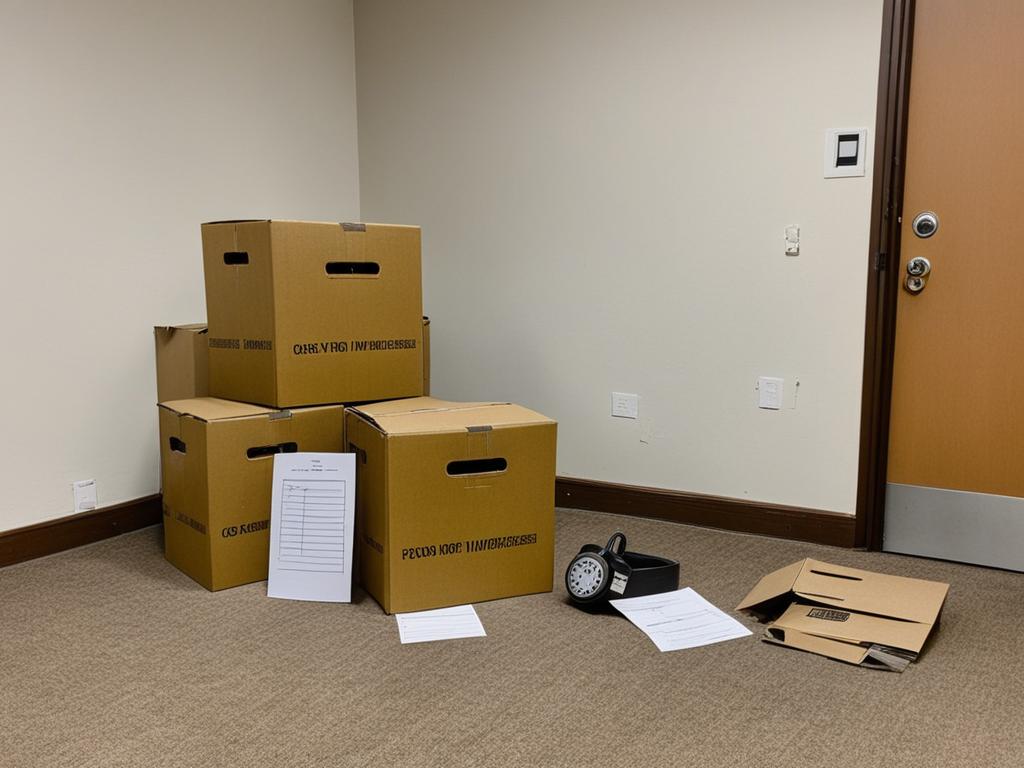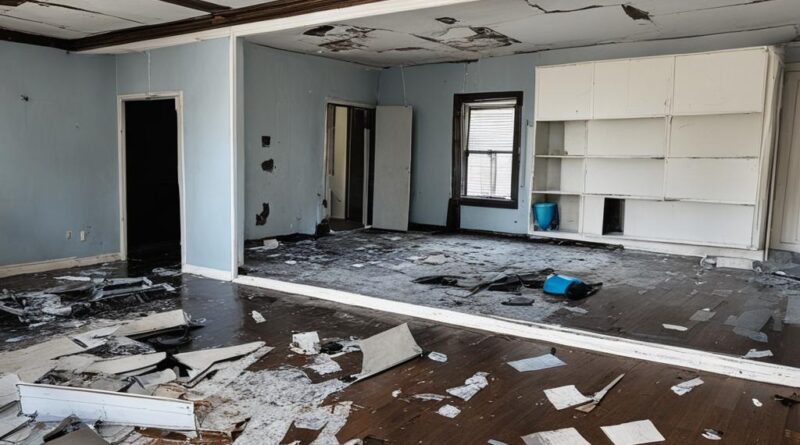Understanding Tenant Lease Agreement Breaches
A breach of a lease agreement by a tenant can have significant repercussions for both parties involved. Understanding what constitutes a breach, the potential consequences, and how to navigate these issues legally is crucial for landlords and tenants. In this article, we will explore the various aspects of tenant lease agreement breaches and provide valuable information on how to handle these situations effectively.
Key Takeaways:
- A breach of a lease agreement by a tenant can have serious consequences for both the tenant and the landlord.
- Common types of lease agreement violations include failure to pay rent, property damage, unauthorized subletting, and violation of lease terms.
- Landlords should be vigilant in identifying tenant breaches by regularly reviewing the lease agreement and gathering evidence.
- Once a breach is identified, landlords should notify the tenant in writing and provide a deadline for resolving the violation.
- Negotiations should be initiated to come to a resolution, but if unsuccessful, legal action may be necessary.
- A breach of a lease agreement can have significant financial implications, and landlords should consider the costs and losses involved.
- Clear communication, documentation, and seeking legal advice when needed are key to handling lease agreement breaches effectively.
Common Types of Tenant Lease Agreement Violations
Tenants can breach lease agreements in various ways. It is essential for landlords to be aware of these potential breaches and take appropriate action. Some common types of violations include:
- Failure to pay rent in a timely manner
- Property damage beyond normal wear and tear
- Unauthorized subletting of the property
- Keeping pets when the lease prohibits it
- Failure to maintain the cleanliness of the property
- Violation of the terms of the lease agreement
These violations can disrupt the landlord-tenant relationship and have legal implications. Landlords must be proactive in addressing lease agreement breaches to protect their rights and interests.
| Violation | Explanation | Consequences |
|---|---|---|
| Failure to pay rent in a timely manner | Delay or non-payment of rent by the tenant | Possible eviction, late fees, legal action for recovery of owed rent |
| Property damage beyond normal wear and tear | Excessive damage to the property caused by the tenant | Deductions from security deposit, legal action for repairs or compensation |
| Unauthorized subletting of the property | Renting out part or all of the property to another party without the landlord’s permission | Termination of the lease agreement, legal action for breach |
| Keeping pets when the lease prohibits it | Housing pets in the property despite lease restrictions | Possible fines, termination of the lease agreement |
| Failure to maintain the cleanliness of the property | Neglecting to keep the property clean and sanitary | Warnings, fines, deductions from security deposit for cleaning costs |
| Violation of the terms of the lease agreement | Going against specific clauses and conditions outlined in the lease | Termination of the lease agreement, legal action for breach |
Identifying Tenant Lease Agreement Breaches
As a landlord, it is essential to promptly identify tenant breaches of lease agreements. By regularly reviewing the lease agreement and monitoring the tenant’s adherence to its terms, you can spot any potential violations that may arise. This proactive approach allows you to address breaches early on and take appropriate action to protect your rights as a landlord.
Gathering Evidence
Gathering evidence is crucial when identifying tenant lease agreement breaches. It provides you with the necessary documentation to support your claim of a breach of contract. Some key pieces of evidence to look for include:
- Late rent payments: Document any instances of rent paid after the due date stated in the lease agreement.
- Property damage: Take photos or videos of any damages that go beyond normal wear and tear. This evidence will help demonstrate the tenant’s failure to maintain the property.
- Complaints from neighbors: If neighbors report disturbances or violations of lease terms, it is important to document these complaints as additional evidence.
By gathering such evidence, you can strengthen your case and have a greater chance of resolving the breach of the lease agreement efficiently.
| Evidence of Lease Agreement Breach | Description |
|---|---|
| Late rent payments | Document instances of rent paid after the due date stated in the lease agreement. |
| Property damage | Take photos or videos of damages that go beyond normal wear and tear. |
| Complaints from neighbors | Record and document any complaints received from neighbors regarding violations of lease terms. |
Note: The table above provides examples of evidence that can help establish a breach of the lease agreement.
Identifying tenant lease agreement breaches early on and gathering sufficient evidence sets the foundation for addressing the violation effectively. With this information at hand, you can proceed to notify the tenant of the breach and take appropriate action to rectify the situation.

Notifying the Tenant of the Breach
Once a breach of the lease agreement by the tenant has been identified, it is important to notify the tenant in writing. The notification should clearly specify the breach and request actions to remedy it. A deadline should be provided for the tenant to rectify the violation. It is crucial to document all communication with the tenant regarding the breach for future reference.
Effective communication is key when dealing with a breach of the lease agreement. Notifying the tenant in writing ensures that there is a documented record of the breach and the steps taken to address it. By providing a clear description of the violation and the desired actions to remedy it, you establish expectations and give the tenant a chance to correct their behavior.
The written notification should contain:
- A clear description of the breach
- Specific actions required to remedy the violation
- A deadline for the tenant to rectify the breach
By setting a deadline, you give the tenant a reasonable amount of time to address the violation. Be sure to include a specific date by which the tenant should resolve the issue to avoid any confusion.
Additionally, it is essential to keep a record of all communication with the tenant regarding the breach. This documentation may prove crucial in the future if legal action becomes necessary. Keep copies of all written correspondences, emails, and any other relevant evidence related to the breach.
Remember, maintaining professionalism in your communication is essential. Keep the tone of the notification firm but polite, sticking to the facts without resorting to personal attacks or threats. Clear and respectful communication increases the chances of a positive resolution.
Using a written notification to inform the tenant of the breach serves as an important step in resolving the issue. It establishes a record of your efforts to address the violation while giving the tenant an opportunity to rectify the situation. Should the breach persist, further action may need to be taken, such as negotiation or pursuing legal remedies.
Negotiating a Resolution with the Tenant
After notifying the tenant of the breach, the next step is to engage in negotiations to resolve the issue. A meeting should be scheduled with the tenant to discuss the breach and explore possible solutions. Landlords should aim to be flexible and willing to compromise, while also clearly expressing their expectations and obligations under the lease agreement. Any agreed-upon solutions or remedies should be documented in writing.
If the breach is minor and the tenant is cooperative, it may be possible to reach a resolution through open communication and understanding. In such cases, the landlord and tenant can discuss the necessary steps to rectify the breach and establish a plan to ensure future compliance.
“Negotiating a resolution is often the most desirable outcome for both parties involved. It allows the landlord and tenant to maintain a positive relationship while resolving the breach of the lease agreement.”
However, if the breach is significant or the tenant is unresponsive to negotiations, the landlord may need to consider legal action to protect their rights and interests. Before pursuing legal remedies, it is essential to consult with a lawyer experienced in tenant-landlord law to understand the applicable laws and procedures.
Table: Negotiation Checklist
| Steps | Description |
|---|---|
| 1 | Schedule a meeting with the tenant |
| 2 | Discuss the breach and potential solutions |
| 3 | Be flexible and willing to compromise |
| 4 | Clearly express expectations and obligations under the lease agreement |
| 5 | Document agreed-upon solutions in writing |

Effective negotiation can lead to a favorable resolution, enabling both the landlord and tenant to move forward in a mutually beneficial manner. It is important to remain professional and objective throughout the negotiation process while prioritizing compliance with the lease agreement terms.
Legal Options for Lease Agreement Violations
If all attempts to resolve the breach of the lease agreement fail, landlords may need to pursue legal action. Consulting with a lawyer experienced in tenant-landlord law is advisable. The legal process for eviction or seeking damages for the breach will depend on the specific circumstances and the laws of the jurisdiction. It is essential to follow the proper procedures and documentation required by the court.
When faced with a tenant who has violated the lease agreement, eviction may be necessary to regain control of your property. Eviction is a legal process that requires specific steps to be followed. Here is a general outline of the eviction process:
- Issue a written notice: Provide the tenant with a written notice detailing the violation and the intent to evict if the issue is not resolved within a specified timeframe. This notice should be in compliance with local laws.
- File a complaint: If the tenant fails to rectify the violation within the specified timeframe, you may need to file a complaint with the appropriate court. This complaint should outline the reasons for eviction and provide supporting documentation.
- Attend the hearing: The court will schedule a hearing to review the case. Both the landlord and the tenant will have an opportunity to present their arguments and evidence.
- Obtain a judgment: If the court rules in your favor, a judgment for eviction will be issued. The tenant will be given a set timeframe to vacate the property voluntarily.
- Enforce the eviction: If the tenant fails to vacate the property within the specified timeframe, you may need to seek assistance from law enforcement to enforce the eviction. They will physically remove the tenant from the property.
- Recover damages: If the tenant caused any financial loss or damage to the property, you may be able to seek compensation through legal action. Consult with your lawyer on the best course of action.
It is important to note that the eviction process can vary from state to state, so it is crucial to consult local laws and regulations or seek advice from a legal professional. Remember to document all interactions and communication with the tenant throughout the process to support your case.

Evicting a tenant is a serious matter that should be handled with care and in compliance with the law. Seeking legal advice ensures that you follow the proper procedures and protect your rights as a landlord. An experienced lawyer can guide you through the eviction process and help you navigate any obstacles that may arise.
Understanding the Financial Impact of Lease Agreement Breaches
A breach of a lease agreement can have significant financial implications for the landlord. In addition to the costs associated with pursuing legal action, there may be a loss of rental income, damages to the property, and unpaid rent.
“A breach of a lease agreement not only affects the landlord’s bottom line but also disrupts the financial stability of the rental property.”
Let’s take a closer look at the potential consequences of breaching a lease agreement:
1. Loss of Rental Income
When a tenant breaches a lease agreement, it often results in a loss of rental income for the landlord. If the tenant fails to pay rent or abandons the property without notice, the landlord is left without the expected income stream.
2. Damages to the Property
Another financial impact of a lease agreement breach can be damages to the property. If the tenant engages in activities that result in property damage beyond normal wear and tear, the landlord may incur additional expenses for repairs or renovations.
3. Unpaid Rent
In cases where the tenant violates the lease agreement and fails to pay rent, the landlord may have to pursue legal action to recover the unpaid amount. This can involve additional costs such as attorney fees and court expenses.
4. Legal Expenses
Legal action to address a lease agreement violation can be costly. Landlords may need to hire an attorney and file a lawsuit against the tenant, which can result in substantial legal fees.
5. Vacancy Period
If the breach of the lease agreement leads to eviction, the property may remain vacant for a period of time. During this vacancy period, the landlord is responsible for covering all expenses, including mortgage payments, property maintenance, and utilities, without the benefit of rental income.
It is crucial for landlords to carefully assess the true financial impact of a breach of the lease agreement. Consulting with legal professionals and evaluating the costs and benefits of pursuing legal action is essential in determining the most effective course of action to mitigate losses.

Conclusion
Dealing with a breach of a lease agreement by a tenant can be complex and stressful. However, by understanding the common types of violations, identifying breaches promptly, following the proper procedures for notification and negotiation, exploring legal options when necessary, and assessing the financial impact, landlords can navigate these situations more effectively.
Clear communication is key in resolving lease agreement breaches. Maintaining open lines of dialogue with tenants and documenting all communication can help ensure that both parties are aware of the breach and the steps being taken to address it. By prioritizing clear communication, landlords can minimize misunderstandings and mitigate any potential conflicts.
Documentation is also crucial in lease agreement breaches. Keeping records of lease agreements, notices, and any evidence of the breach is essential in case legal action needs to be taken. These documents provide a solid foundation for proving the breach and protecting the landlord’s rights and interests.
Seeking legal advice when needed is highly recommended in lease agreement breaches. Consulting with a lawyer experienced in tenant-landlord law can provide valuable guidance on navigating the legal process and ensuring compliance with local laws and regulations. This can help landlords make informed decisions and protect their rights throughout the entire process.
FAQ
What are common types of tenant lease agreement violations?
Common types of violations include failure to pay rent on time, property damage beyond normal wear and tear, unauthorized subletting, keeping pets when prohibited, failure to maintain cleanliness, and violation of lease terms.
How can I identify a breach of the lease agreement by a tenant?
Regularly reviewing the lease agreement and monitoring the tenant’s adherence to its terms can help you identify potential breaches. Gather evidence such as late rent payments, property damage, or neighbor complaints to support your claim.
How should I notify the tenant of a breach in the lease agreement?
Notify the tenant in writing, clearly specifying the breach and requesting actions to remedy it. Provide a deadline for the tenant to rectify the violation and document all communication regarding the breach.
How can I negotiate a resolution with the tenant regarding a lease agreement breach?
Schedule a meeting with the tenant to discuss the breach and explore possible solutions. Be flexible and willing to compromise while expressing your expectations and obligations under the lease agreement. Document any agreed-upon solutions in writing.
What are my legal options for lease agreement violations?
If attempts to resolve the breach fail, you may need to pursue legal action. Consult with a lawyer experienced in tenant-landlord law to understand the legal process for eviction or seeking damages based on your specific circumstances and jurisdiction.
What are the financial implications of a breach of a lease agreement by a tenant?
A breach can result in various financial consequences, such as costs associated with legal action, loss of rental income, property damages, and unpaid rent. Assess the true financial impact and consider the most effective course of action to mitigate losses.

